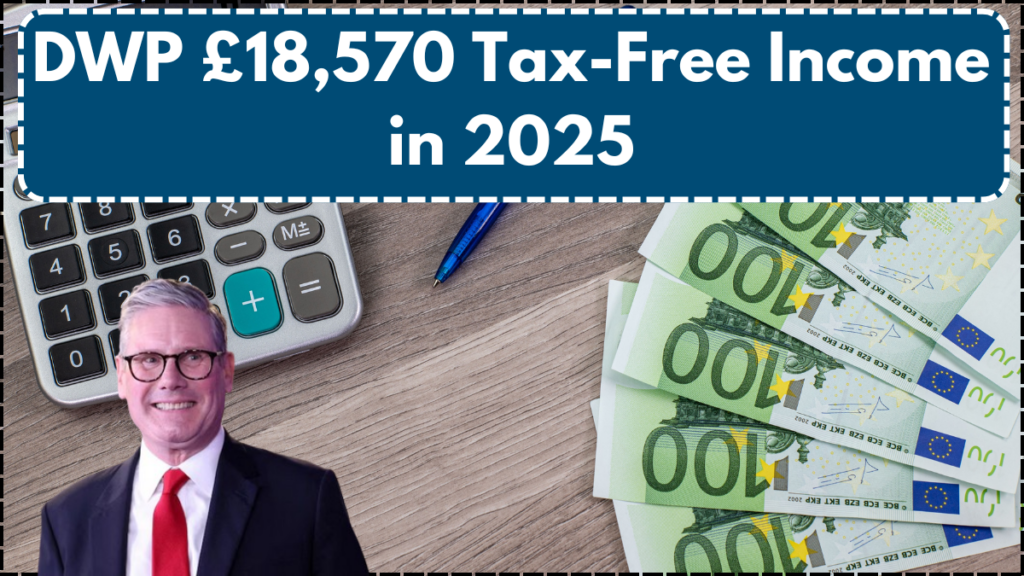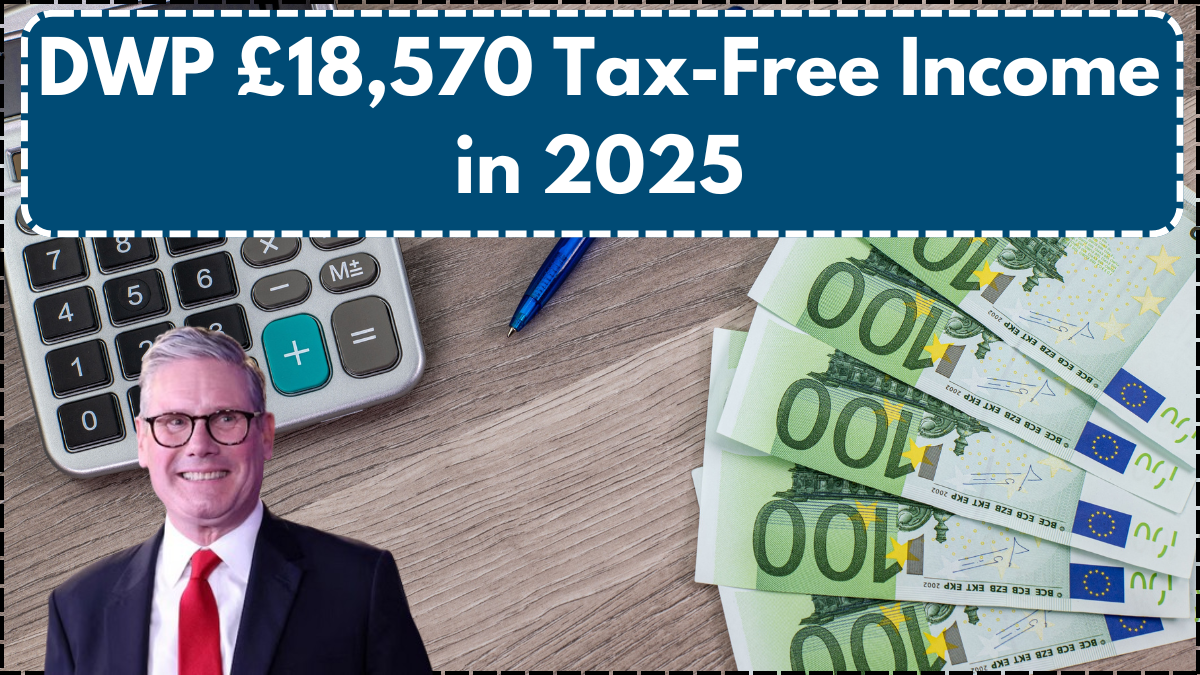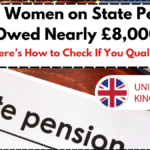With inflation continuing to impact households across the UK in April 2025, the importance of optimising income and savings is more crucial than ever. The concept of earning up to £18,570 tax-free in the 2025/26 tax year is gaining traction among low-income earners, pensioners, and savers alike. This strategy is not a new initiative by the Department for Work and Pensions (DWP), but rather a clever combination of three HMRC allowances that, when used correctly, can help individuals retain more of their hard-earned money.
These allowances are particularly useful for individuals receiving DWP-managed benefits such as state pensions, disability payments, or income support. Understanding how these allowances interact can offer substantial tax savings for those with modest incomes and interest-based earnings.

How Does the DWP £18,570 Tax-Free Income Work in 2025?
The ability to earn up to £18,570 tax-free is derived from three key HMRC allowances:
- Personal Allowance (£12,570)
- Starting Rate for Savings (up to £5,000)
- Personal Savings Allowance (up to £1,000)
When layered together, these allowances create a generous buffer against income tax, especially for pensioners and part-time workers who rely on savings interest or have limited non-savings income.
2025/26 Key Tax-Free Income Details
| Aspect | Details |
|---|---|
| Total Tax-Free Income | £18,570 |
| Applicable Tax Year | 2025/26 |
| Combined Allowances Used | Personal Allowance, Starting Rate for Savings, PSA |
| Administered By | HM Revenue and Customs (HMRC) |
| Best Suited For | Pensioners, part-time workers, savers, DWP recipients |
| Reference Websites | www.gov.uk, www.hmrc.gov.uk |
Breakdown of the Three Key Allowances
Personal Allowance (£12,570)
Every UK resident is entitled to a Personal Allowance of £12,570 in the 2025/26 tax year. This means the first £12,570 of your total income (including pensions, earnings, or rental income) is completely tax-free. This allowance is automatically factored in through your tax code and doesn’t require manual application.
Starting Rate for Savings (Up to £5,000)
This often-overlooked allowance applies only if your non-savings income is below £12,570. If eligible, you can earn up to £5,000 in interest from savings without paying tax. However, for every pound you earn above £12,570 in non-savings income, your starting savings allowance reduces by the same amount.
Ideal Candidates:
- Pensioners with minimal pensions
- Part-time earners with significant savings
- Students or freelancers relying on interest-based income
Personal Savings Allowance (Up to £1,000)
This allowance lets basic rate taxpayers earn up to £1,000 in tax-free savings interest. If you’re a higher-rate taxpayer, the allowance is reduced to £500, while additional-rate taxpayers are not eligible at all.
Who Stands to Benefit in 2025?
To maximise this tax-free threshold, you must meet these conditions:
| Requirement | Details |
| Residency | Must be a UK tax resident |
| Non-Savings Income | ≤ £12,570 per annum |
| Savings Income | Must include interest from UK savings accounts |
| Taxpayer Status | Basic or non-taxpayer |
Target Groups Include:
- Pensioners with low taxable pensions but substantial savings
- Self-employed individuals with variable income levels
- Dual-income households planning savings strategically
- Students with bursaries or part-time income supplemented by savings
Smart Strategies to Make the Most of Your Allowance
Track Income Streams Separately
Keep your sources of income well-organised. For example, maintain separate bank accounts for pension payments and interest to simplify tracking and eligibility.
Maximise ISAs for Additional Tax-Free Growth
ISAs are completely exempt from tax and do not impact any of the three allowances. By using ISAs in tandem with the DWP tax-free structure, savers can increase their total tax-free returns.
Share Allowances as a Couple
Married couples and civil partners can potentially double their tax-free benefits to £37,140, provided they meet individual criteria. This strategy requires coordination of incomes and savings across both individuals.
Plan Interest Payouts Across Tax Years
Spread the maturity dates of fixed-term savings or bonds across different tax years to stay within annual thresholds and avoid taxation.
Use HMRC’s Digital Tools
Leverage HMRC’s official calculators to project your total income and test different savings strategies. These tools are updated regularly for 2025/26 and provide guidance tailored to your unique situation.
The Importance of Tax-Free Planning in 2025
In a year where inflation continues to push up costs for utilities, groceries, and rent, safeguarding every pound becomes essential. Unlike benefits such as Universal Credit or Pension Credit, these allowances are statutory tax benefits—meaning they are not means-tested or limited by household income.
This makes the £18,570 tax-free strategy a powerful option for retirees, low-income earners, and part-time workers who seek to enhance financial resilience without navigating complex benefit applications.
Conclusion
The DWP £18,570 Tax-Free Income strategy is a timely opportunity in 2025 for millions of UK residents to legally avoid unnecessary income tax. By understanding and effectively applying the Personal Allowance, Starting Rate for Savings, and Personal Savings Allowance, individuals can preserve more of their income, especially in financially challenging times. Early planning, strategic income separation, and intelligent use of ISAs and HMRC tools can help you unlock these benefits fully.
FAQs
How can I tell if I qualify for the full £18,570 tax-free income?
You must be a UK resident with total non-savings income under £12,570 and have interest-earning savings. Use HMRC’s online calculators to assess eligibility.
Does this tax-free threshold apply to ISA interest?
No, ISA interest is always tax-free and does not count towards your Personal Savings Allowance or Starting Rate for Savings.
Can higher-rate taxpayers benefit from this?
Higher-rate taxpayers can only claim up to £500 through the Personal Savings Allowance. They are unlikely to benefit from the Starting Rate for Savings.
Is this the same as a DWP benefit?
No. Although DWP payments like pensions can contribute to your total income, this tax-free income strategy is governed by HMRC.
Can I claim this tax-free amount retroactively?
In some cases, you can reclaim overpaid tax from previous years, but it’s best to plan proactively each tax year to avoid overpayment.
For More Information Click Here
Pari is a passionate writer known for captivating stories that blend imagination and reality. Inspired by travel, history, and everyday moments, Pari crafts narratives that resonate deeply with readers.




